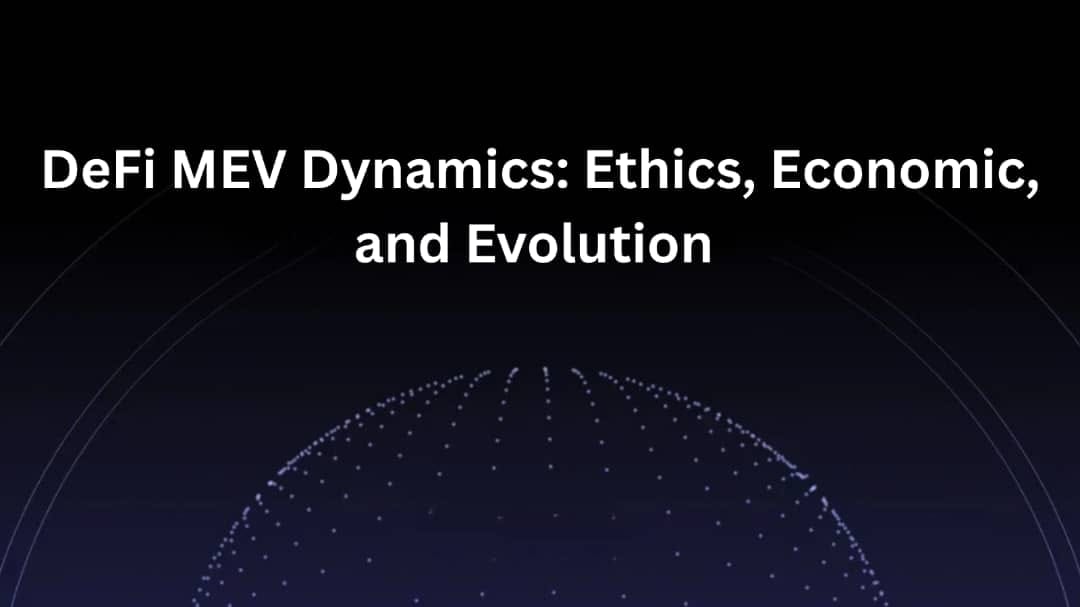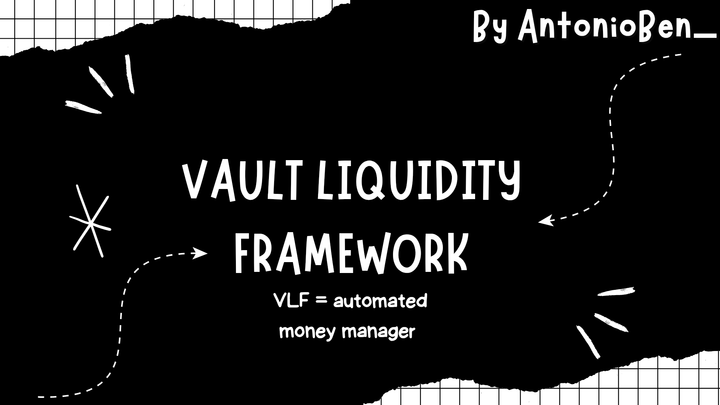DeFi MEV Dynamics: Ethics, Economics, and Evolution

Decentralized Finance (DeFi) has surged in popularity over the past several years, promising financial freedom, transparency, and new avenues for wealth creation without intermediaries. Yet, within this brave new frontier lurks a subtle, powerful force Miner Extractable Value (MEV) that complicates the idealistic narrative of a perfectly fair and decentralized financial ecosystem. MEV profoundly influences the efficiency, ethics, and evolution of DeFi protocols and participants, driving both opportunity and controversy.
In this comprehensive article, we will break down the intricate mechanics of MEV, explore the critical moral questions it raises, and analyze how it impacts core DeFi components such as Automated Market Makers (AMMs), liquidation bots, and arbitrage traders. We’ll also discuss the evolution of MEV practices and offer insights into where this dynamic ecosystem is headed.
1. Understanding MEV: Fundamentals and Mechanics
Miner Extractable Value (MEV), sometimes called Maximal Extractable Value, is the surplus value that miners (or more generally, block producers or validators) can capture through the ordering, inclusion, or exclusion of transactions within the blocks they produce. This concept was first coined in 2019 by Phil Daian and other researchers at Flashbots, a research and development organization dedicated to MEV transparency and mitigation.
How does MEV arise? At its core, blockchain protocols like Ethereum execute transactions sequentially within blocks, and the ordering of this sequence can significantly affect transaction outcomes and profits. For example, if a large trade on a decentralized exchange (DEX) is pending, a miner or validator can insert their own transaction just before (front-run), just after (back-run), or sandwiching that trade to capitalize on the resulting price shift.
1.1 Key MEV Terminology
- Block Producers: Miners or validators responsible for proposing and finalizing new blocks.
- Searchers: Independent actors who scan the blockchain mempool for MEV opportunities and construct bundles of transactions to maximize profit.
- Front-Running: Executing a transaction before a known pending transaction to profit from expected outcomes.
- Back-Running: Placing a transaction immediately after a pending transaction to benefit from the impact.
- Sandwich Attacks: Placing two transactions around a victim’s transaction to manipulate prices and extract value.
- Mempool: The pool of unconfirmed transactions awaiting inclusion in a block.
1.2 Example: MEV in Action – The Sandwich Attack
Suppose Alice submits a large swap order on an AMM, which will move the price significantly. A miner or searcher observing this pending transaction can sandwich it by:
- Submitting a buy order just before Alice's transaction, pushing the price higher.
- Allowing Alice’s transaction to execute at the elevated price.
- Submitting a sell order after Alice’s transaction to capitalize on the increased price.
This sequence yields profit for the miner/searcher but comes at Alice’s expense, effectively slippage beyond the natural market price. This is a prime example of how MEV can negatively impact ordinary users.
1.4 Why Does MEV Matter?
Many blockchains operate on the principle of fairness and decentralization. MEV challenges this principle by enabling block producers and opportunistic actors to prioritize profit over fairness, potentially disadvantaging users and affecting the security and trustworthiness of the network.
2. The Ethical Dilemmas of MEV: Fairness, Exploitation, and Transparency
As with any economic incentive, the existence of MEV introduces a complex web of ethical considerations. While some argue that MEV enables market efficiency and is an inevitable byproduct of permissionless blockchains, others view it as a form of predation that undermines user trust.
1. Ethical Question 1: Is MEV a Fundamental Flaw or Natural Market Force?
Proponents contend that MEV transactions help correct price inefficiencies and incentivize miners to secure the network with economic rewards beyond simple block rewards. In this view, MEV is a market force analogous to arbitrage in traditional finance.
Critics, however, argue MEV often manifests as frontrunning and sandwich attacks, which exploit less technically proficient users, strip liquidity providers of value, and result in opaque, unfair markets.
2. Ethical Question 2: Who Should Have Access to MEV Opportunities?
MEV extraction currently tends to favor those with sophisticated technology, fast connections, and deep blockchain expertise often large trading firms and miners. This concentration raises concerns around decentralization and equitable access to financial benefits.
3. Ethical Question 3: Transparency and Consent
Users generally do not consent to or understand the impact of MEV on their transactions. Lack of transparency can prevent users from making informed decisions, effectively eroding trust in DeFi ecosystems. Should protocols openly communicate MEV risks? Can informed consent ever be realistically achieved in fast-moving markets?
2.1 Combatting Malicious MEV Through Community and Protocol Design
The DeFi community continually debates and designs mechanisms to “democratize” MEV, increase transparency, and minimize predatory behavior.
Flashbots pioneered a solution by creating a transparent auction mechanism that allows miners and searchers to capture MEV profit without resorting to harmful chain reorganization techniques, simultaneously limiting negative effects on regular users.
Other projects aim at MEV-resistant protocols that obfuscate transaction details until inclusion or randomize ordering so MEV extraction becomes less profitable or even impossible.
3. Impact of MEV on DeFi Ecosystem Components
MEV does not exist in a vacuum; it dramatically reshapes how core DeFi primitives behave, impacting Automated Market Makers (AMMs), liquidation bots, and arbitrageurs.
3.1 MEV and Automated Market Makers (AMMs)
AMMs such as Uniswap and SushiSwap rely on liquidity pools and deterministic automated pricing formulas (XY=k and variants). Their transparency and on-chain execution make them fertile ground for MEV exploitation.
3.2 How MEV Affects AMMs
- Price Slippage Inflation: MEV actors place trades that intentionally move AMM pool prices to extract profit at the expense of users.
- Loss for Liquidity Providers: Sandwich attacks and front-running erode impermanent loss protections by increasing volatility and reducing net returns.
- Reduced User Experience: Users face unpredictable transaction costs and outcomes, undermining trust.
However, MEV also introduces more frequent arbitrage that can, paradoxically, help AMM prices align more closely with external market prices, arguably improving market efficiency.
3.3 MEV and Liquidation Bots
DeFi lending protocols rely on collateralized loans. When collateral values drop below a critical threshold, liquidations are triggered to repay lenders and maintain system solvency.
Liquidation bots scan for these opportunities and race to initiate liquidation transactions to earn a liquidation bonus (fee). MEV accelerates this process:
- Faster Liquidation Execution: MEV-enabled bots can prioritize liquidation transactions for immediate inclusion, beating others to the payout.
- Market Volatility: Rapid liquidation executions can exacerbate price drops, contributing to cascading liquidations and flash crashes.
- Ethical Considerations: Aggressive liquidation bots can drive borrowers into insolvency during sharp market downturns, leading some to question the fairness of these dynamics.
3.4 MEV and Arbitrage Strategies
Arbitrage in DeFi typically entails exploiting price differences between protocols or pools. MEV plays a critical role in defining who profits and how quickly.
- Bot Competition: MEV incentivizes a competitive, near-real-time arms race among arbitrage bots, striving to be first to seize fleeting price discrepancies.
- Network Congestion: High competition in arbitrage MEV can lead to congestion and soaring gas fees, disproportionately affecting small users.
- Positive Market Efficiency: On the positive side, arbitrage MEV helps align asset prices across fragmented DeFi markets, enhancing liquidity and stability.
4. Economic Implications of MEV
The economic dimension of MEV is multifaceted, influencing incentives, network security, and participant behavior.
1. Incentives for Block Producers
Mining or validating blocks becomes more profitable with MEV. This reward layer above block subsidies and transaction fees can:
- Enhance Security: Higher rewards attract more participants, theoretically strengthening network security.
- Centralization Risks: However, MEV profits might concentrate with large mining pools or validators who have the technical means to maximize extraction, risking centralization.
2. User Cost and Market Efficiency
MEV extraction increases transaction costs (gas fees) as users outbid each other or face predatory bot transactions. These costs can deter smaller investors and reduce accessibility, conflicting with DeFi’s open-access ethos.
On the flip side, MEV-induced arbitrage corrects price discrepancies, arguably bringing more rational pricing, which benefits the overall ecosystem.
3. Economic Rent Redistribution
MEV can be viewed as a form of economic rent extracted by block producers and searchers. This rent is effectively taken from ordinary users (swappers, lenders, borrowers) and liquidity providers who suffer value loss indirectly through slippage, liquidation penalties, or delayed execution. The distribution of these rents raises questions about fairness and sustainability in DeFi.
5. The Evolution of MEV: From Problem to Potential
Since the discovery of MEV, the DeFi space has evolved from treating it as a purely negative externality to exploring ways it can be harnessed constructively.
5.1 Early MEV: Exploitative Practices
Initially, MEV manifested primarily as front-running and sandwich attacks, largely invisible and unregulated. These practices caused user frustration, price distortions, and questioned the viability of fair decentralized markets.
5.2 Flashbots and MEV-Boost
Flashbots introduced the concept of transparent MEV auctions, offering a private communication channel between searchers and miners to submit bundled transactions. This:
- Reduced negative externalities like chain reorganizations ("reorgs").
- Promoted ethical MEV extraction through more transparent and permissioned channels.
- Laid groundwork for MEV-Boost, a relay system for Ethereum validators post-merge to capture MEV safely.
5.3 MEV Mitigation Protocols
Recent DeFi protocols integrate anti-MEV designs, for instance:
- Fair Ordering Services: Protocols like CoW Protocol aim to batch and settle transactions fairly, reducing front-running.
- Commit-Reveal Schemes: Conceal transaction details until block inclusion, thwarting front-running attempts.
- Batch Auctions: Execute multiple orders simultaneously to minimize ordering advantages.
5.4 Flashbots Auction Innovation
Flashbots Auctions allow market participants to bid for priority inclusion, ensuring MEV rents are allocated through market mechanisms rather than covert competition. This shift towards transparency and participation democratizes MEV access to an extent.
6. Mitigations, Solutions, and the Future
MEV is unlikely to disappear entirely, but its impact can be managed and even harnessed to improve system efficiency and fairness.
6.1 Technical Solutions
- Private Transaction Pools: Employed to hide transactions from mempool front-running bots.
- Protocol-Level Defenses: Such as time-weighted average pricing (TWAP) oracles and transaction ordering rules resistant to manipulation.
- Cross-Layer Collaboration: Validator-client designs (like MEV-Boost) that separate block proposers and builders, enhancing competition and reducing harmful MEV strategies.
6.2 Regulatory Perspectives
Regulators may scrutinize MEV-related practices as potential market manipulation, demanding increased transparency and possibly introducing compliance frameworks or prohibiting predatory MEV behavior.
6.3 Community and Ecosystem Roles
User education, transparency reports, and open-source MEV monitoring tools empower the community to understand and react to MEV dynamics.
6.4 Potential Positive Role of MEV
If transparent and fairly distributed, MEV profits could incentivize better network security, deeper liquidity, and smarter contract innovations that benefit all users.
Resources for Further Exploration
For more detailed technical insights, economic analysis, and ongoing MEV research, explore the following resources:
- Flashbots - Research and Tools on MEV
- Unleashing the Potential: A Comprehensive Guide to MEV Arbitrage Bot Development Strategies
- Understanding MEV: The Controversial Heartbeat of DeFi
- Understanding MEV And Its Impact On Ethereum Decentralization - Forbes
- A Formal Treatment of Miner Extractable Value (Academic research paper)



Comments ()